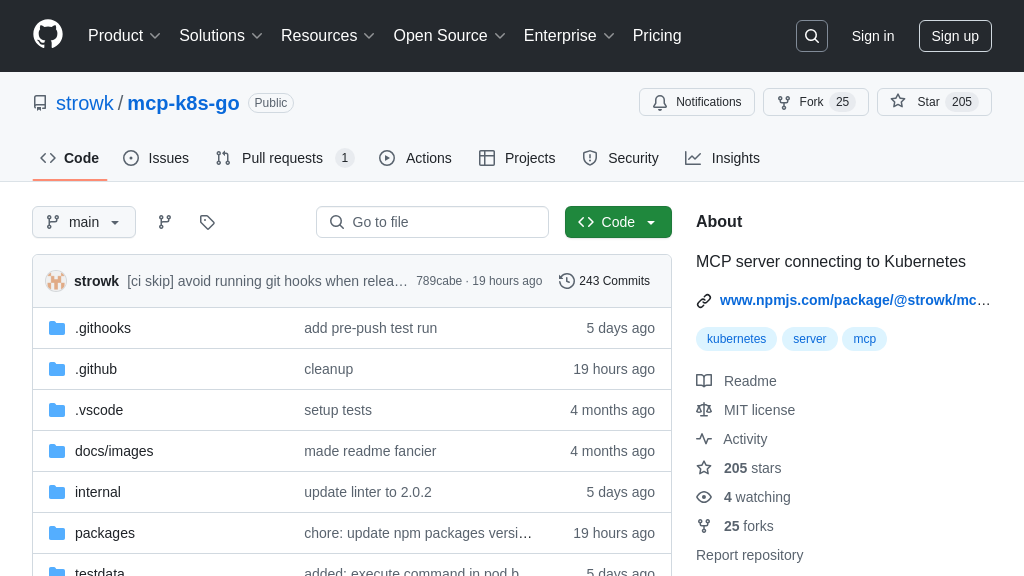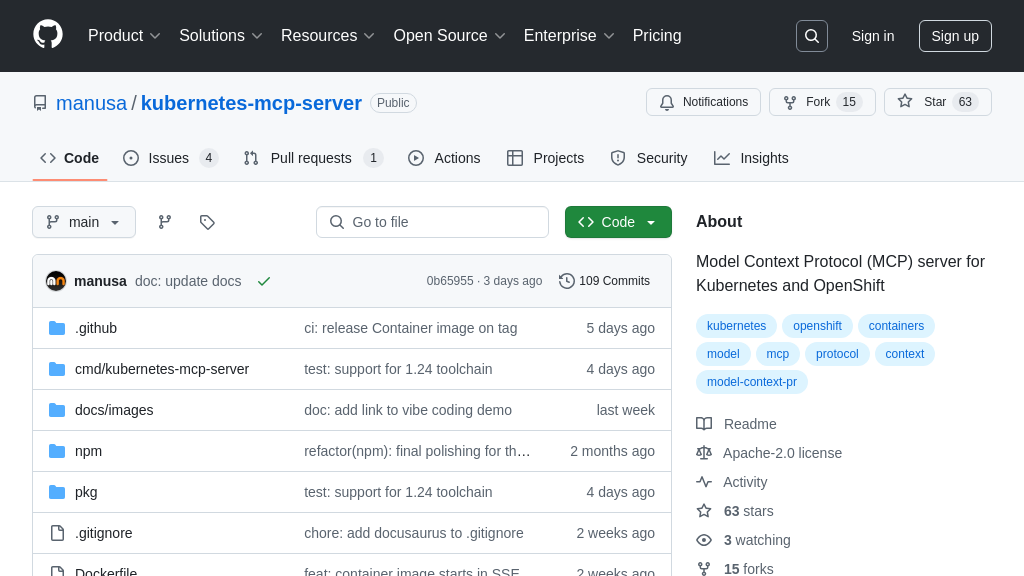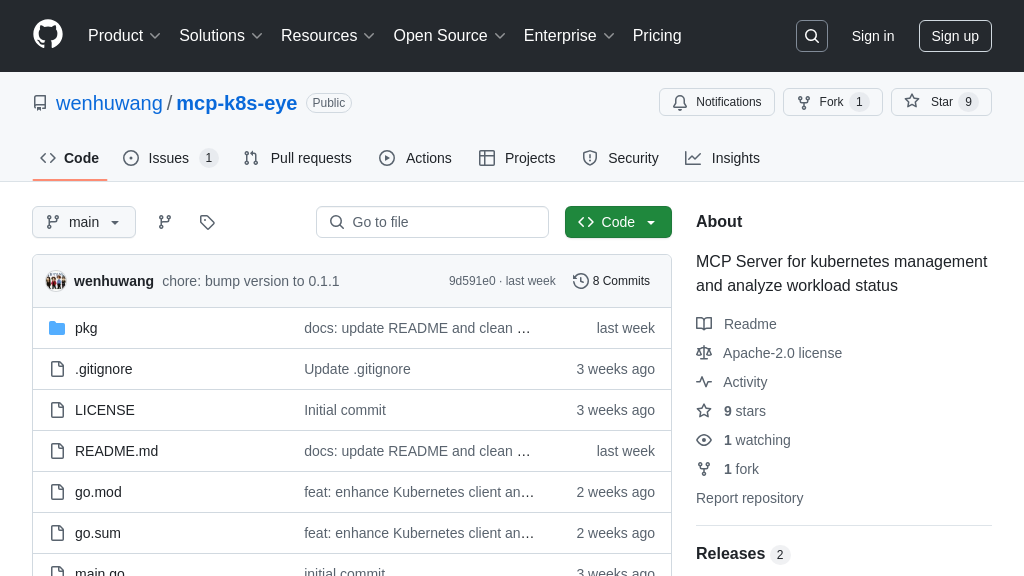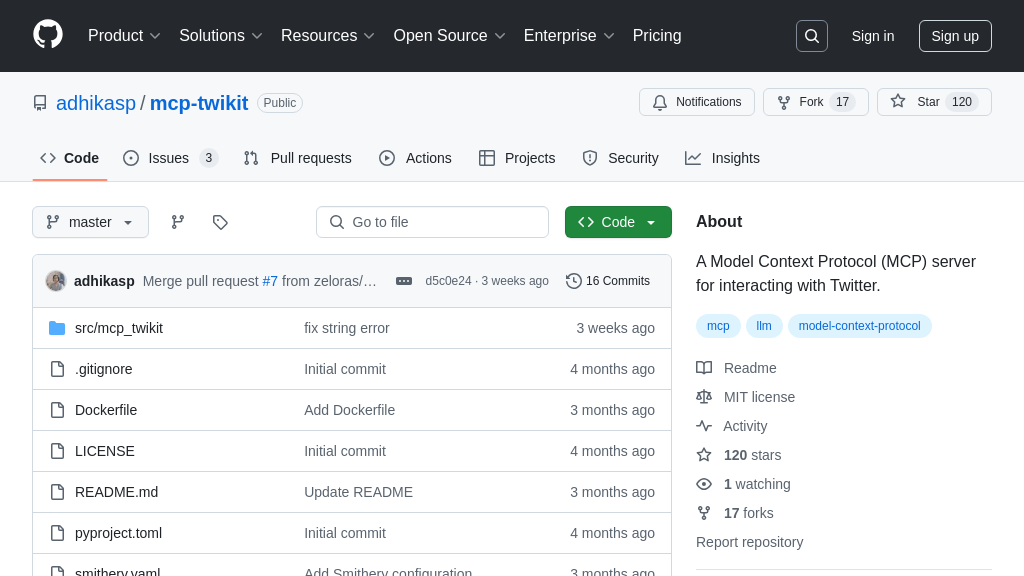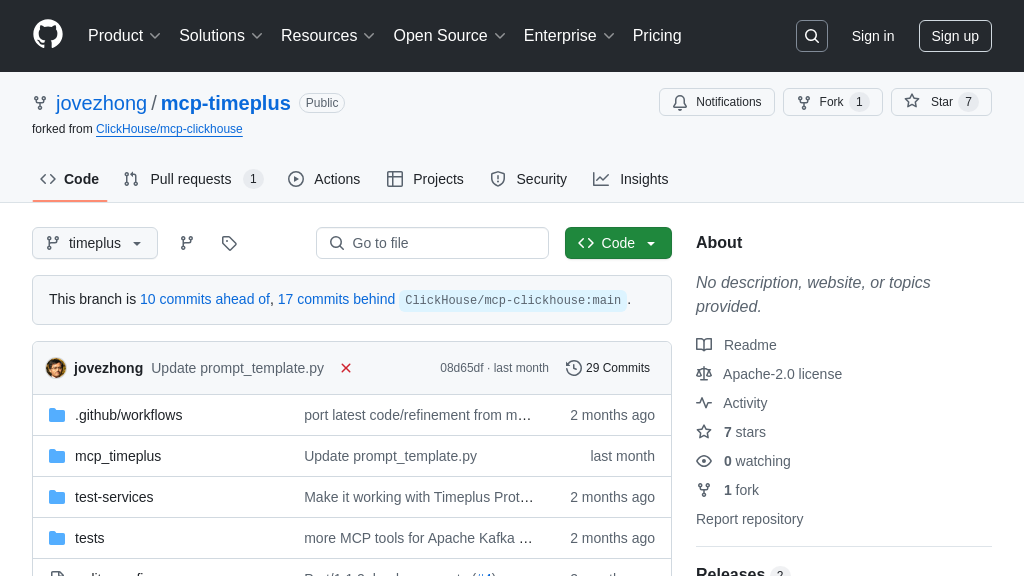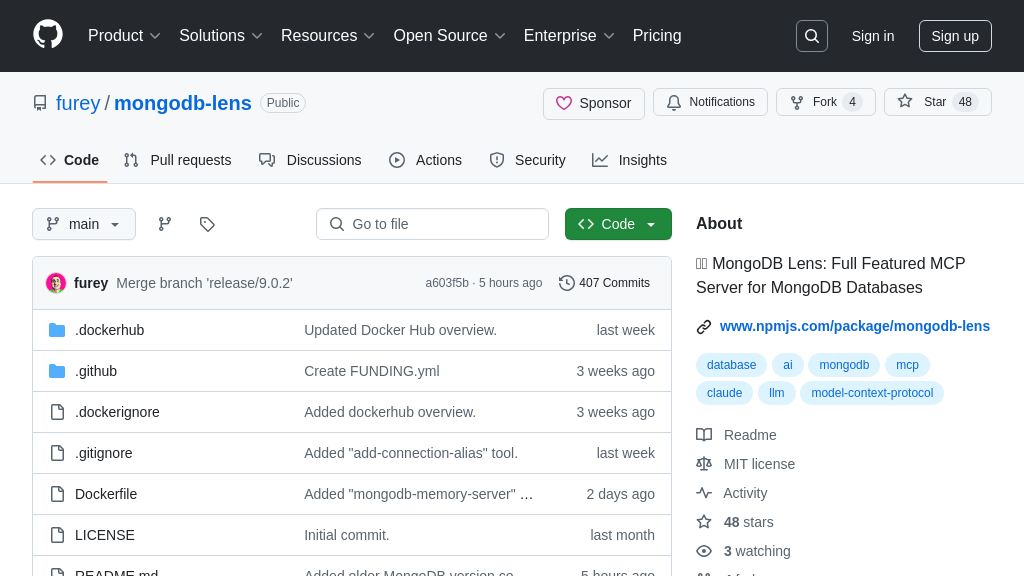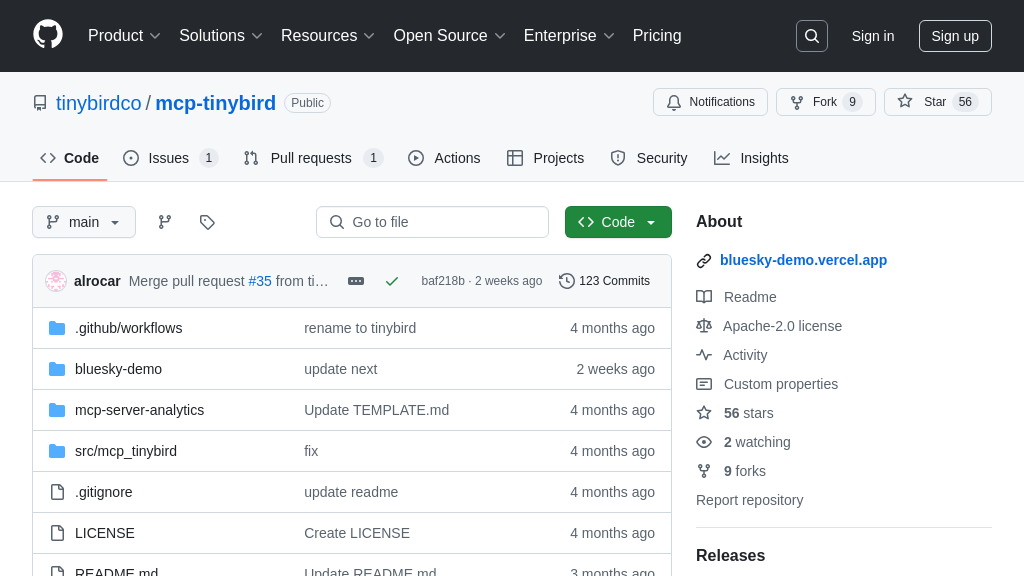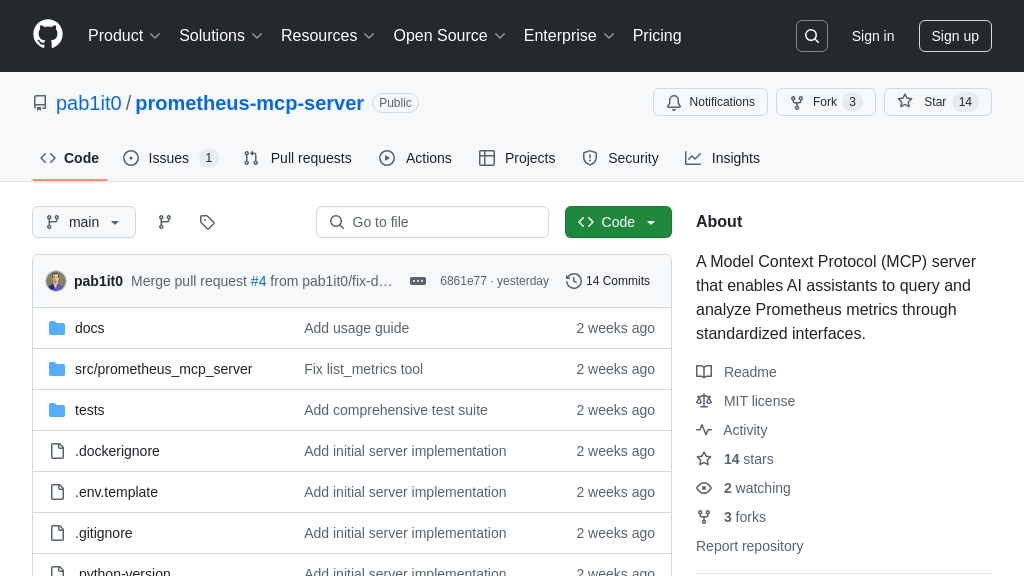homeassistant-mcp
Home Assistant MCP Server: Natural language control for your smart home via AI. An MCP server solution.
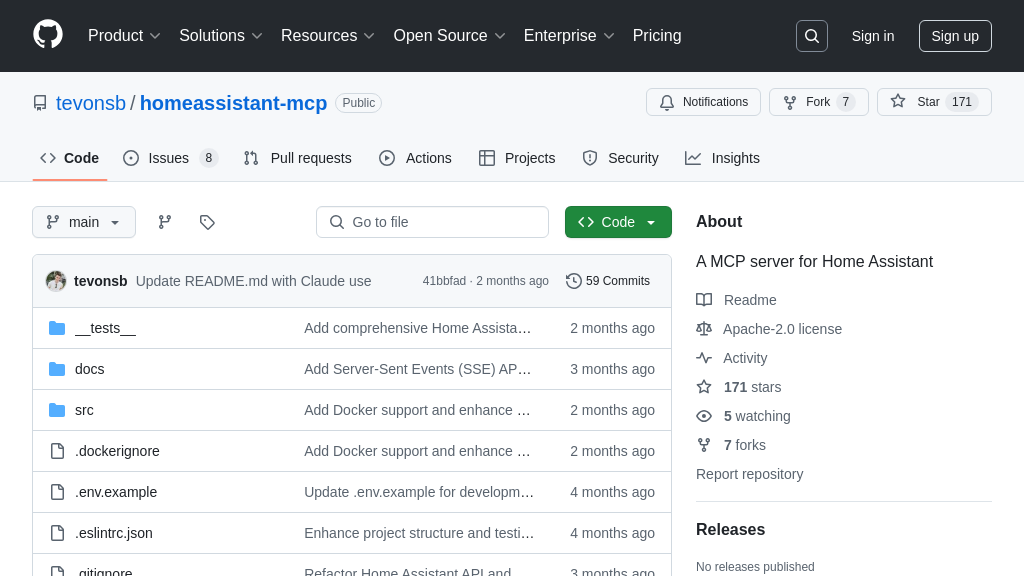
homeassistant-mcp Solution Overview
Home Assistant MCP Server is a server solution that acts as a bridge, connecting your Home Assistant instance to Language Learning Models (LLMs) via the Model Context Protocol (MCP). This enables natural language control and monitoring of your smart home devices. It offers a comprehensive API for managing your Home Assistant ecosystem, from device control (lights, climate, covers, etc.) to automation and add-on management.
The server provides real-time updates through Server-Sent Events (SSE), ensuring your AI models have the latest information. Key features include token-based authentication, rate limiting, and HACS package management, enhancing both security and functionality. By integrating with Claude Desktop or other MCP clients, developers can leverage natural language to interact with and manage their smart homes, streamlining automation and creating more intuitive user experiences. It uses standard HTTP and SSE for broad compatibility.
homeassistant-mcp Key Capabilities
Natural Language Device Control
The Home Assistant MCP server empowers AI models to control a wide array of smart home devices through natural language commands. This includes lights (brightness, color), climate control (temperature, modes), covers (position), switches, media players, fans, locks, vacuums, and cameras. The server translates natural language instructions into specific Home Assistant service calls, enabling users to interact with their smart home using intuitive language. For example, a user could say "Turn on the living room lights and set the brightness to 50%" and the AI model, via the MCP server, would translate this into the appropriate Home Assistant commands to execute the request. This feature simplifies smart home interaction, making it more accessible and user-friendly. The server leverages Home Assistant's extensive device support, ensuring compatibility with a broad range of smart home ecosystems.
Real-time State Updates via SSE
This feature provides AI models with real-time awareness of the smart home environment through Server-Sent Events (SSE). The server pushes updates to the AI model whenever a device's state changes, an automation is triggered, or a service is called. This allows the AI to react dynamically to changes in the environment and provide contextually relevant responses. For instance, if a motion sensor detects movement, the AI model receives an immediate update and can trigger actions like turning on lights or sending a notification. This real-time feedback loop enhances the AI's ability to understand and respond to the user's needs, creating a more proactive and intelligent smart home experience. The SSE implementation supports subscribing to specific domains or entities, allowing for efficient filtering of events.
Automation and Package Management
The Home Assistant MCP server extends its capabilities beyond simple device control by enabling AI models to manage Home Assistant automations and packages. AI models can create, update, duplicate, and manage automations, allowing for dynamic adaptation of smart home behavior based on user needs or environmental conditions. Furthermore, the server integrates with the Home Assistant Community Store (HACS), providing access to a vast library of custom integrations, themes, and apps. This allows AI models to install, update, and manage these packages, extending the functionality of the smart home and tailoring it to specific user preferences. For example, an AI model could automatically install a new weather integration and create an automation to adjust the thermostat based on the forecast.
Add-on Management
This feature allows AI models to manage Home Assistant add-ons, which are pre-packaged applications that extend the functionality of Home Assistant. Through the MCP server, AI models can browse, install, uninstall, start, stop, and restart add-ons. This provides a powerful way to extend the capabilities of the smart home and integrate with various services and platforms. For example, an AI model could install the "Mosquitto broker" add-on to enable MQTT communication or the "Node-RED" add-on for advanced automation capabilities. The server provides access to add-on versions and configurations, allowing for fine-grained control over the smart home environment. This feature simplifies the management of complex Home Assistant setups and empowers AI models to customize the smart home to meet specific user needs.
Intelligent Organization and Context
The server provides AI models with structured access to the smart home environment through area and floor-based device grouping. This allows the AI to understand the spatial relationships between devices and reason about the context of user requests. For example, a user could ask "Turn off the lights downstairs" and the AI model, knowing the location of each light, would only turn off the lights in the specified area. The server also provides access to historical data, allowing the AI to learn from past interactions and predict future needs. This intelligent organization and context awareness enhances the AI's ability to provide personalized and relevant smart home experiences. The server maintains a real-time context, including user, location, time, and activity, allowing the AI to adapt its behavior to the current situation.
